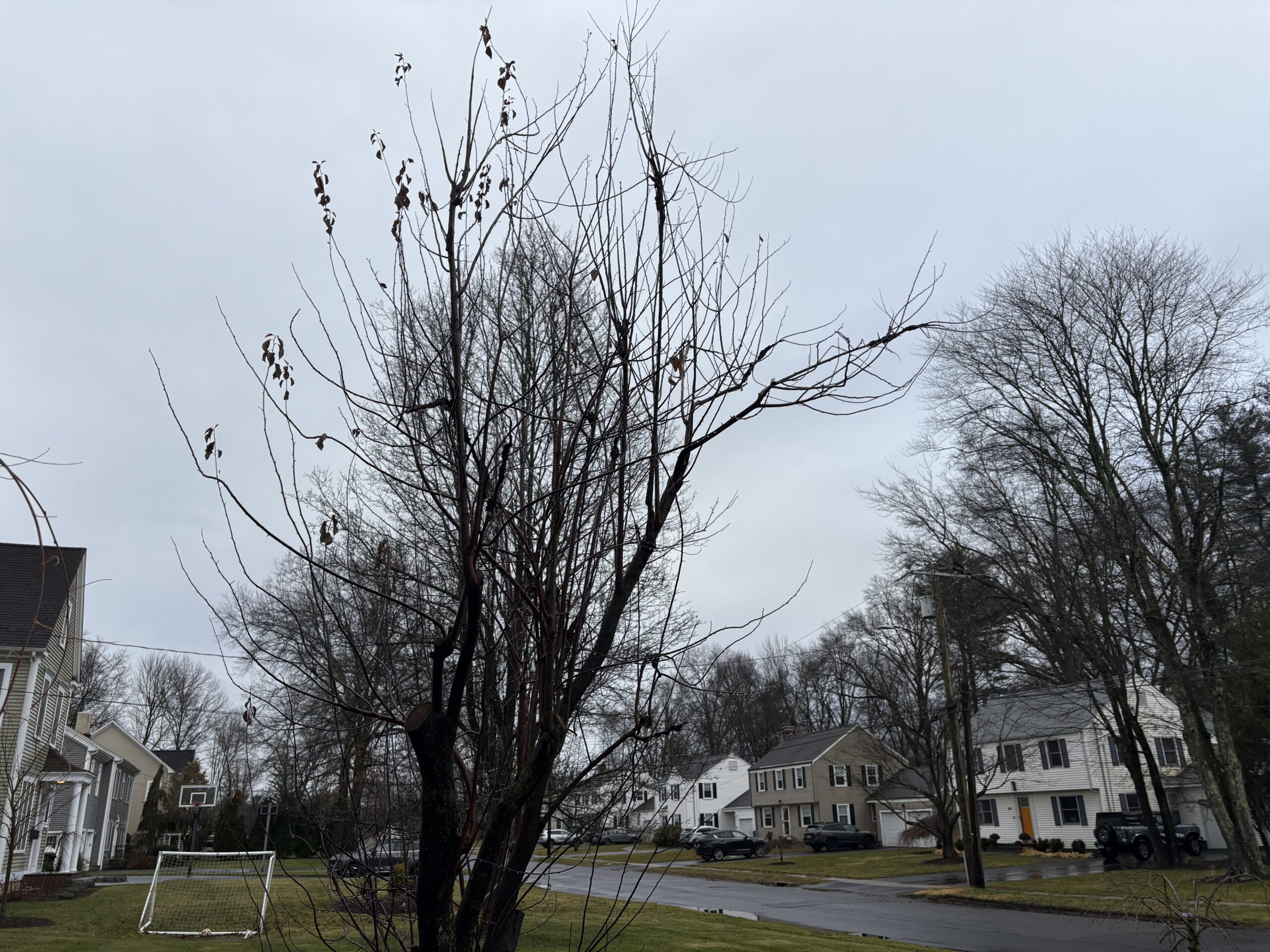West Hartford Students Become ‘Suds’ Scientists

Audio By Carbonatix
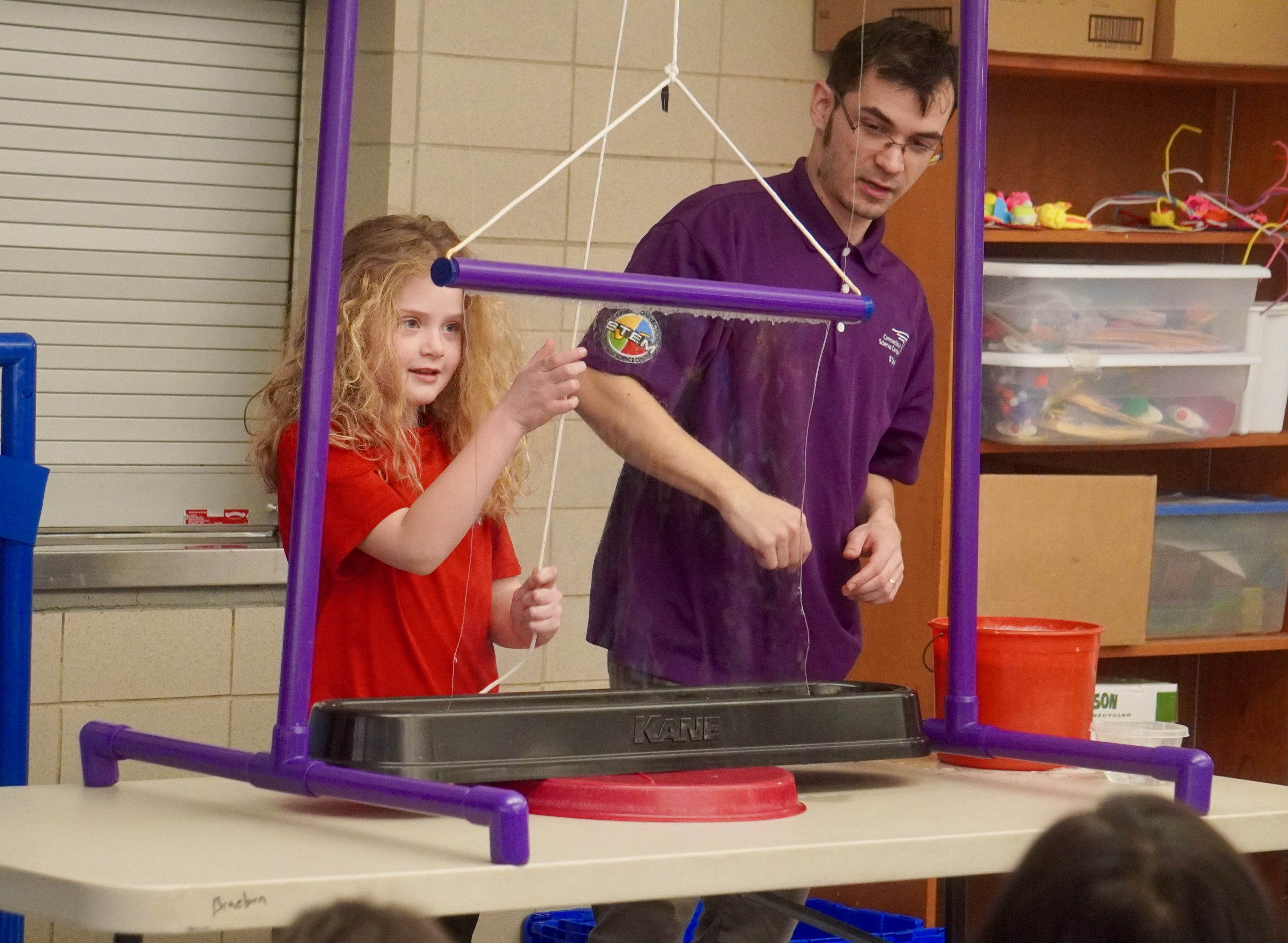
Felicity, a Braeburn student, volunteered to operate the bubble wall during the "Fostering Future Scientists" program in 2023, funded by a grant from the Foundation for West Hartford Public Schools. Photo credit: Ronni Newton (we-ha.com file photo)
First and second graders at West Hartford’s Braeburn Elementary School participated in the ‘Fostering Future Scientists’ program Monday morning.

Delilah and Brody volunteered to catch bubbles during a “Fostering Future Scientists” program at Braeburn, funded by a grant from the Foundation for West Hartford Public Schools. Photo credit: Ronni Newton
By Ronni Newton
Students at Braeburn Elementary School had a sudsy and engaging science lesson on Monday morning, with bubbles serving as the subject of a series of experiments led by “Mr. Nick” of the Connecticut Science Center as part of a grant funded by the Foundation for West Hartford Public Schools.
One of the students even had a chance to be inside a bubble for the grand finale of the program.
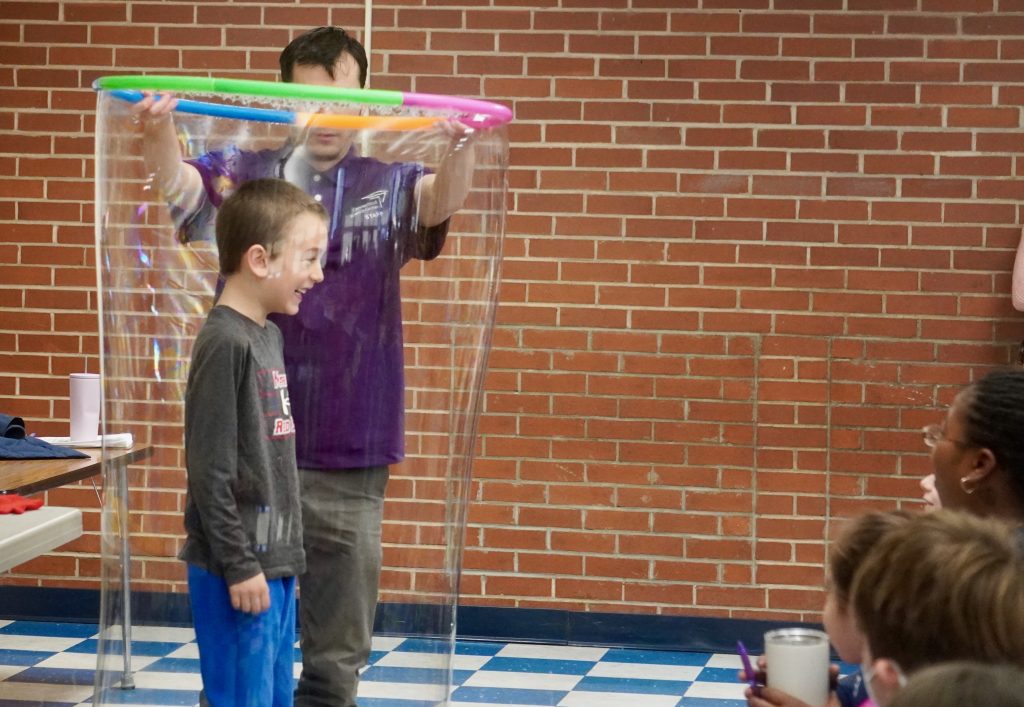
Tommy, a Braeburn student, is placed in a bubble during a “Fostering Future Scientists” program, funded by a grant from the Foundation for West Hartford Public Schools. Photo credit: Ronni Newton
“There’s a lot of science when it comes to bubbles,” Nick Villagra, aka “Mr. Nick,” told an eager group of first and second graders. While the students already knew some facts about bubbles – like that they are filled with air and that they float – by the time the 45-minute program had ended, they knew what dry ice is made of, what happens when you add hot water to dry ice, what happens when you combine bubble solution, dry ice, and hot water, and why bubbles are round. They also learned why, in most cases, bubbles pop when you touch them.
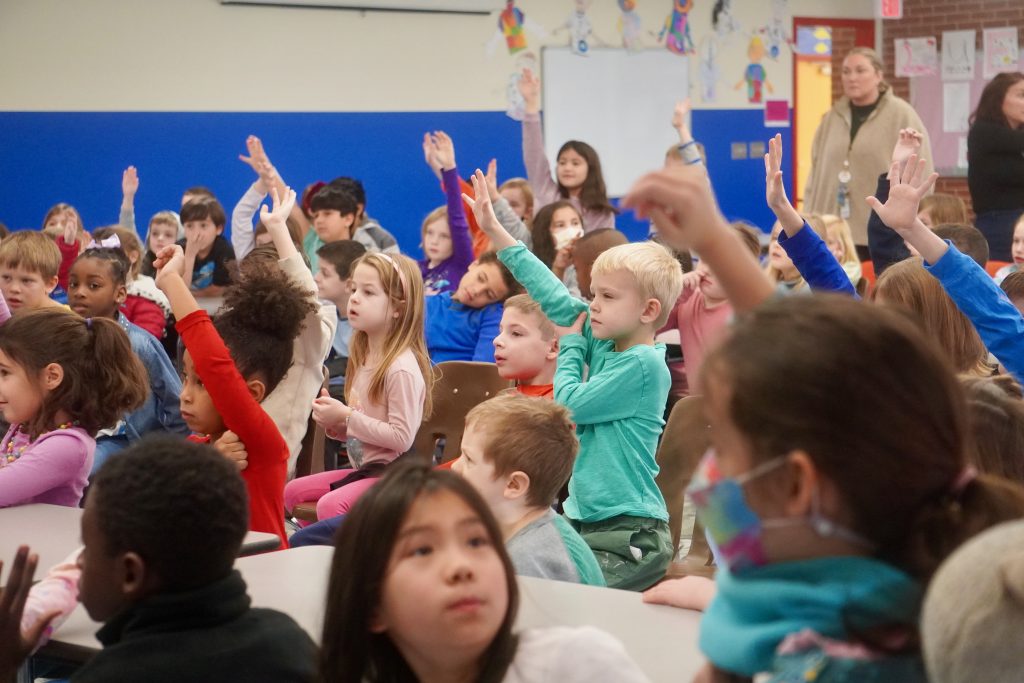
Braeburn first and second grade students eagerly answer questions and volunteer during the “Fostering Future Scientists” program, funded by a grant from the Foundation for West Hartford Public Schools. Photo credit: Ronni Newton
When Villagra donned a thick glove and held up a white material that he said was very cold but not wet, students correctly identified it as dry ice. “You’d get frostbite,” was one student’s answer to why he had to wear a glove to touch it. Students correctly answered the question about the temperature at which water freezes, but dry ice is not water, he told them. It’s carbon dioxide, and freezes at minus 109ºF.
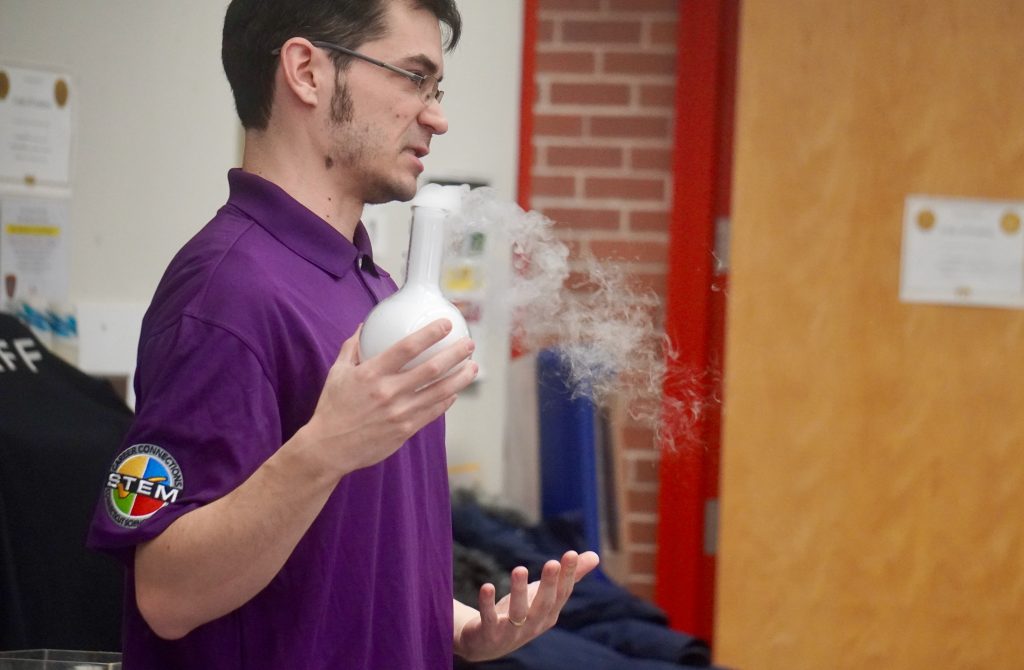
Mr. Nick added hot water to a beaker of dry ice, forming steamy “clouds.” Photo credit: Ronni Newton
There were “oohs and ahs” as he poured hot water over the dry ice and steam rose from the beaker. “What is a cloud?” Villagra asked the students, explaining that clouds are not made of gases because gases are not visible, but rather are droplets of water floating in the sky.
For the next experiment, Villagra started with bubble solution (in this case six parts water, one part dish soap, and some corn syrup to make the bubbles sturdier) and dry ice. The students clapped their hands as the water was added, and shrieked when what Villagra called a “cloud bubble volcano” began exploding out of the beaker – a reaction that continued through the remainder of the program.
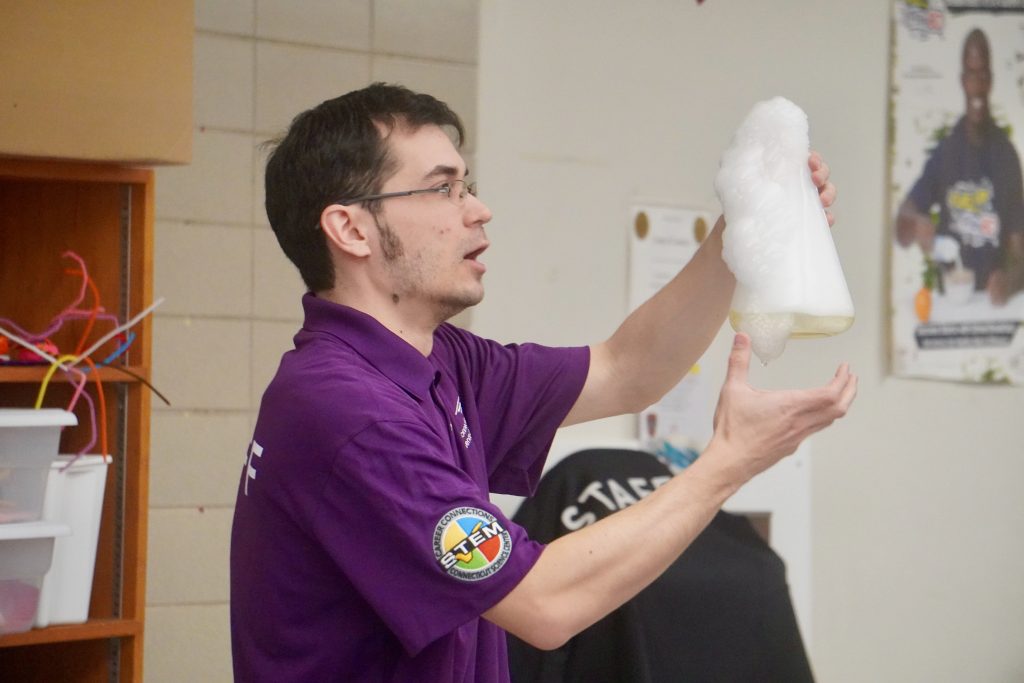
A “cloud bubble volcano” erupts from a beaker full of bubble solution, dry ice, and water. “Fostering Future Scientists” program, funded by a grant from the Foundation for West Hartford Public Schools. Photo credit: Ronni Newton
“There are more bubble mysteries,” Villagra told the students, asking them what shape bubbles come in. Some answered “circles” – but he told them that wasn’t quite right because circles are two-dimensional – while others correctly said bubbles are spheres.
“So let’s try to create a bubble that’s not a sphere,” Villagra said. Eager volunteers Jace, Lora, Zach, and Peyton chose bubble wands in the shapes of Iron Man, Strawberry Shortcake, Minions, and Spiderman and took turns dipping them into solution and waving them, creating seas of bubbles that floated through the Braeburn cafeteria. The experiment showed that the shape of the wand didn’t impact the shapes of the bubbles, however. They were still spheres.
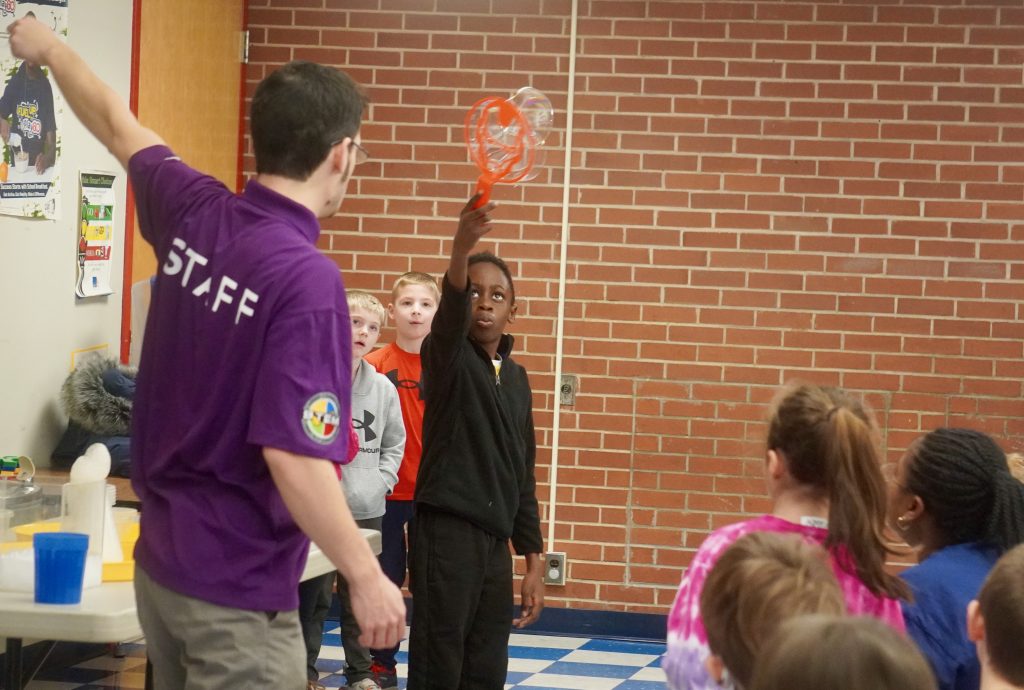
Jace waves an Iron Man wand, but the bubbles that emerge are still shaped like spheres. Photo credit: Ronni Newton
But why? “In science, we like to use something we call a model,” Villagra said. In this case, humans would serve as the model and volunteers Chelsea, Molly, Clark, Ilana, and Keerthi were willing participants. They stood close together, joined hands, and then all pushed back at the same time – ending up in a circle – showing the rest of the students that when air is pushed out equally on all sides, the resulting shape is round.
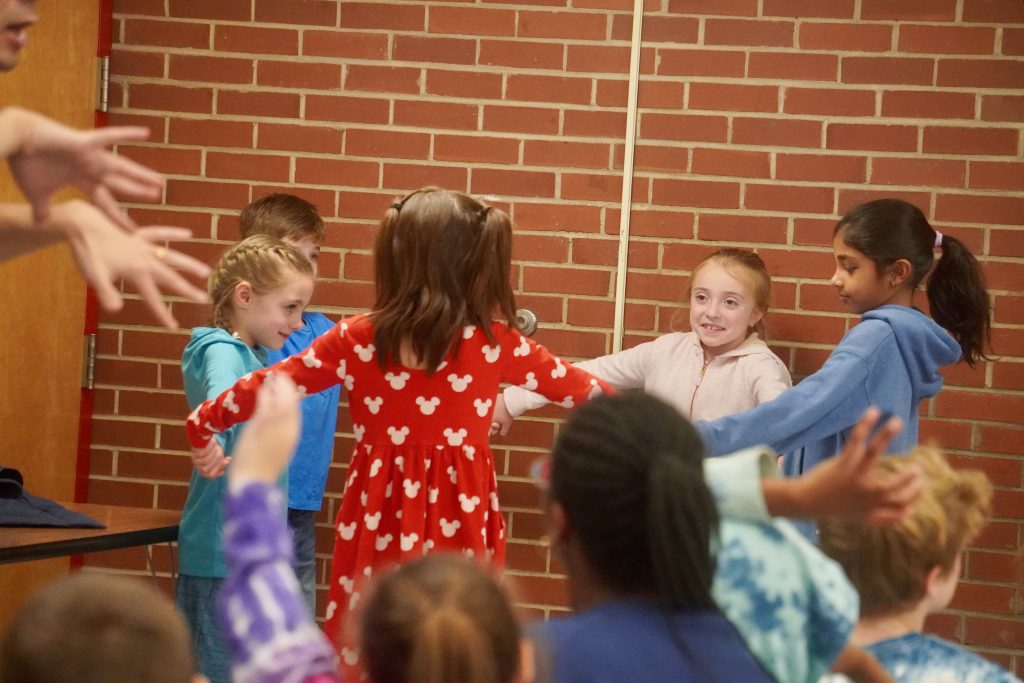
Student volunteers Chelsea, Molly, Clark, Ilana, and Keerthi are human models to show how equal force pushes them out into a circle during the “Fostering Future Scientists” program at Braeburn. Photo credit: Newton
“Why is it that bubbles pop?” Mr. Nick then asked the students. Brody and Delilah were chosen as volunteers for this experiment, and each put on a glove and were able to catch bubbles, and even pass them back and forth. The reason the bubbles didn’t immediately pop, he said, was because they weren’t coming in contact with the oil and grease that’s naturally found on skin. Soap is used to clean off oil and grease, he said, and the soap that’s part of the bubble solution, and the oils on skin “are kind of at odds with each other,” he said. The gloves didn’t have any oil on them so the bubbles could be gently handled.
He showed the students how a giant slinky dipped in bubble solution emerged with bubbles hanging from its many surfaces, and to further show how the solution adheres to surfaces, Villagra introduced the “bubble wall.”
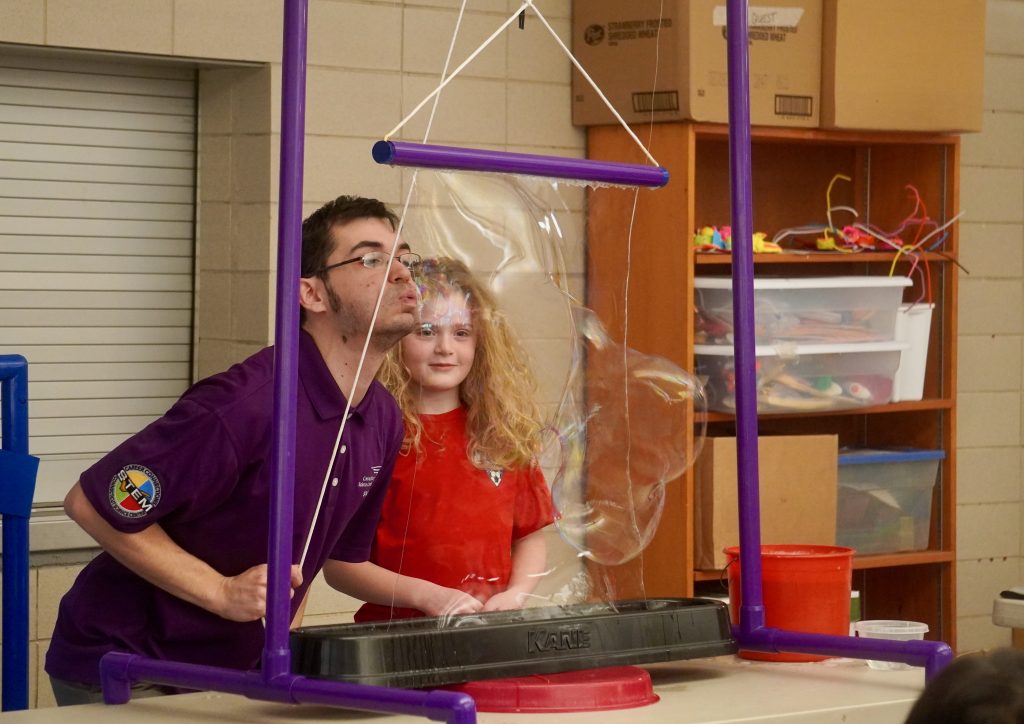
As Felicity held the “bubble” wall, Mr. Nick gently blew into it, creating bubbles. Photo credit: Ronni Newton
As enthusiastic volunteer Felicity slowly pulled a rope, a plastic bar rose from a trough of bubble solution with a shimmery flat, rectangular “bubble” emerging between the thin strings on either end. But then Villagra blew on the rectangle, and showed what happened when the force of air was added – the wall broke apart as small spheres formed.
The grand finale of the program was showing how a kid could be inside a bubble – a privilege that Villagra reserved for the student with the closest birthday. An excited Tommy, whose birthday is later this week, had a huge smile on his face as Mr. Nick lifted a large wand out of a pool of solution, and a giant bubble formed around him.
“Science is so important and we just have to get our kids to experience it at a young age,” said first grade teacher Eileen MacDonnell, the lead applicant for the “Thomas and Cornelia Ford Memorial Grant: Fostering Future Scientists” from the Foundation for West Hartford Public Schools.
“I wrote this grant to enhance the NGSS curriculum and because these special experiences are what I remember from when I was in school. I really want to create lasting memories for my students,” MacDonnell said.
The grant has two more programs: Secret Life of Plants and Sound Breakdown – hands-on programs which Braeburn first graders will experience later this year.
“I am so thankful to the Foundation,” MacDonnell said, adding her thanks to Braeburn’s janitorial staff for their help setting up the cafeteria for Monday morning’s program.
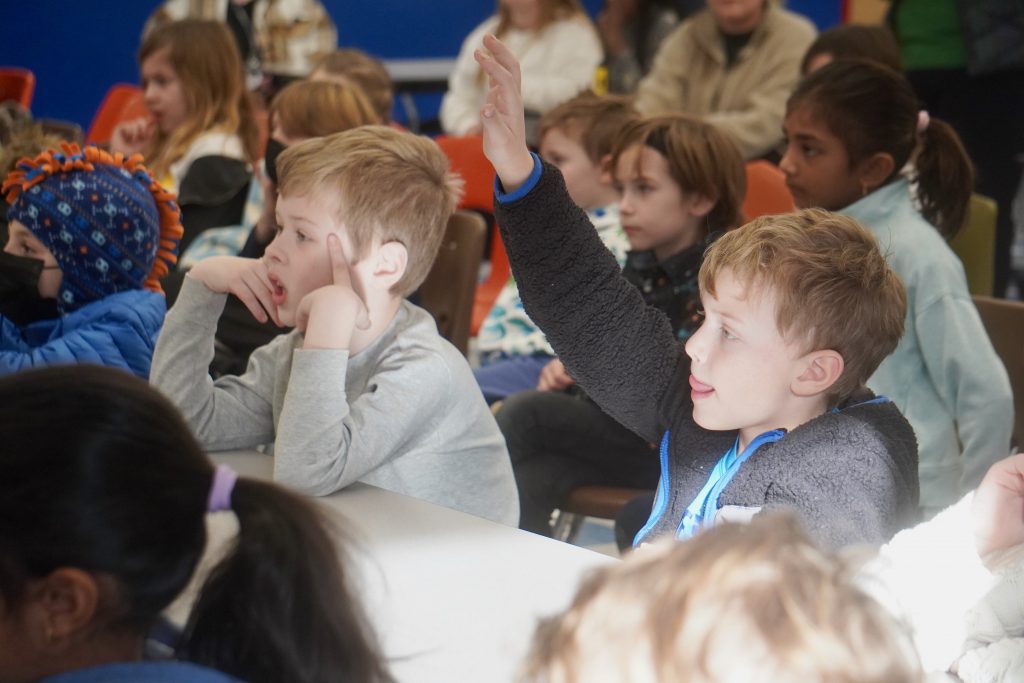
Braeburn first and second grade students eagerly answer questions and volunteer during the “Fostering Future Scientists” program, funded by a grant from the Foundation for West Hartford Public Schools. Photo credit: Ronni Newton
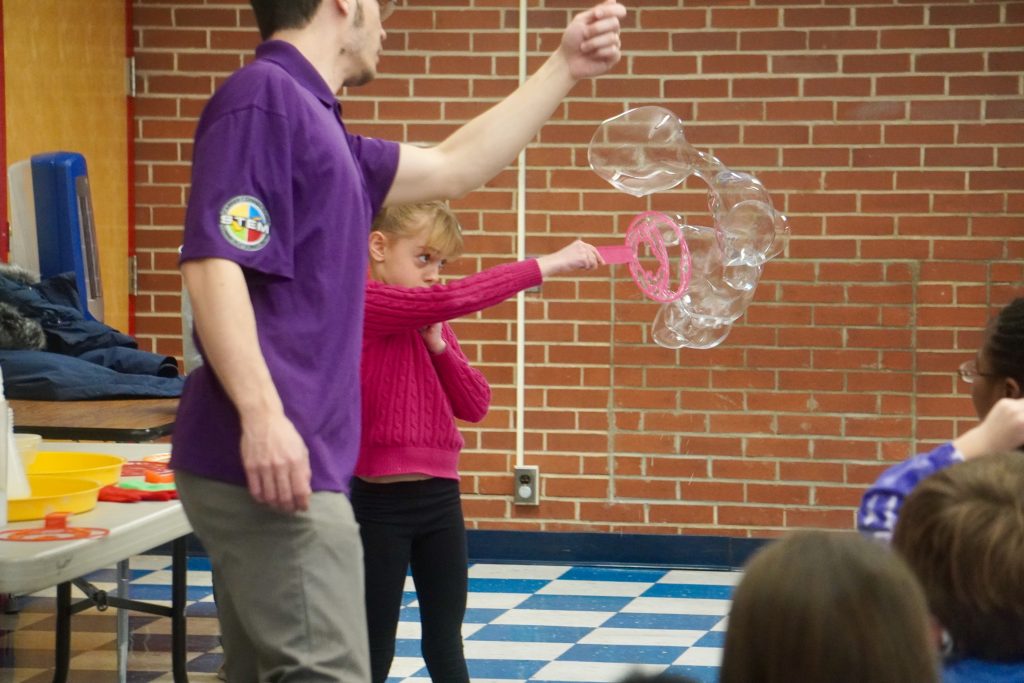
Lora waves a Strawberry Shortcake wand, but the bubbles that emerge are still shape like spheres. Photo credit: Ronni Newton
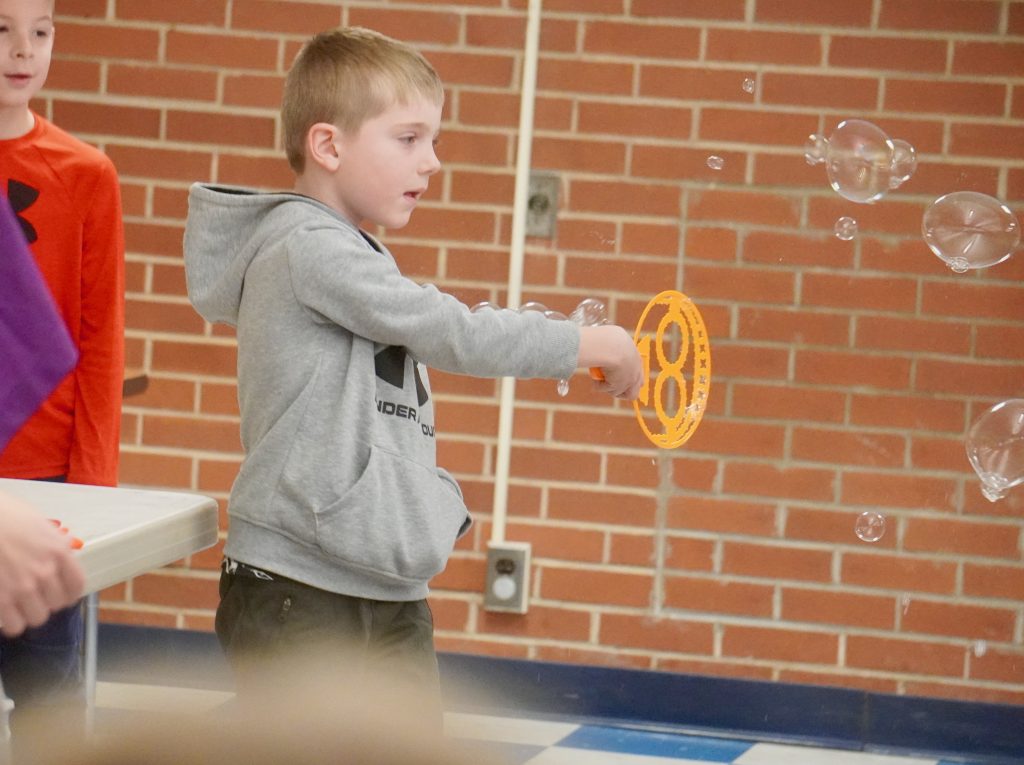
Zach waves a Minion wand, but the bubbles that emerge are still shape like spheres. Photo credit: Ronni Newton
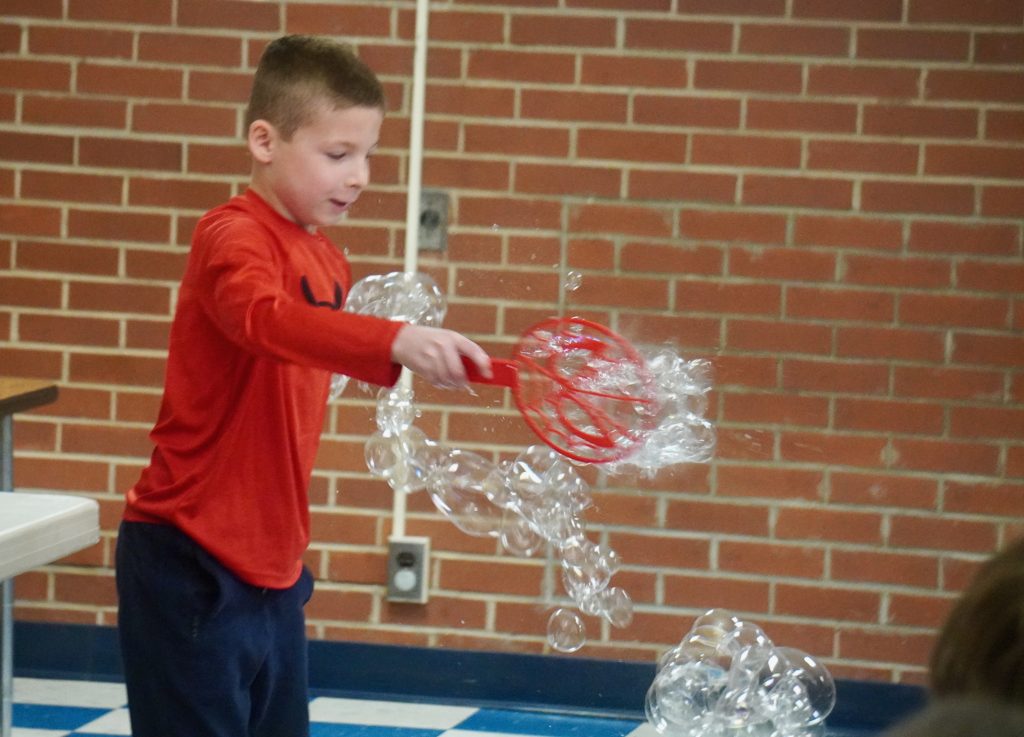
Peyton waves a Spider Man wand, but the bubbles that emerge are still shape like spheres. Photo credit: Ronni Newton
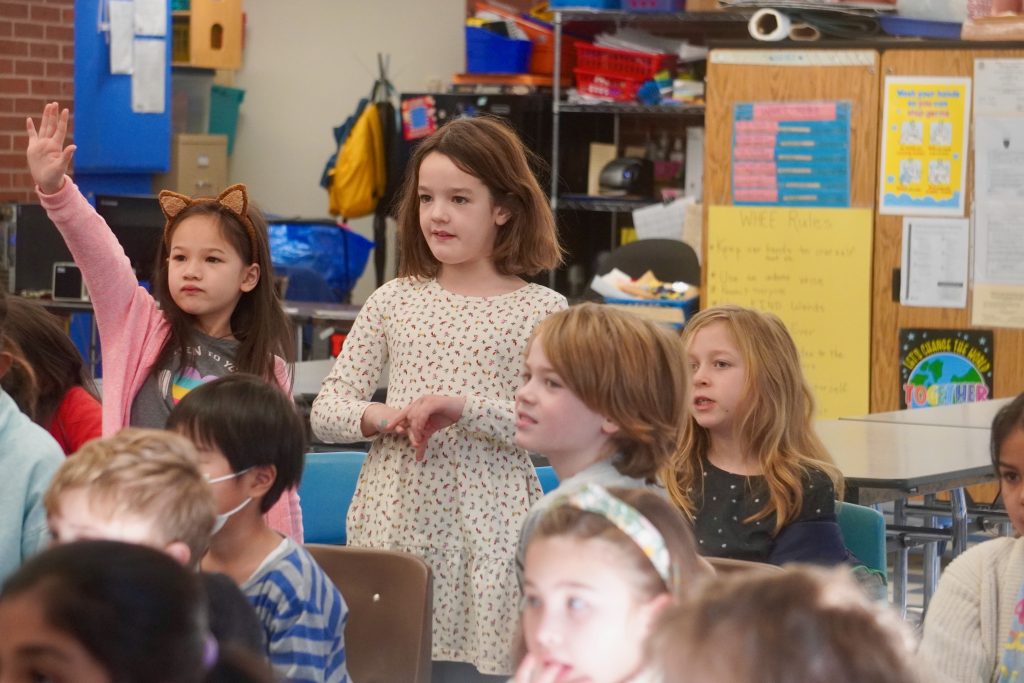
Braeburn first and second grade students eagerly answer questions and volunteer during the “Fostering Future Scientists” program, funded by a grant from the Foundation for West Hartford Public Schools. Photo credit: Ronni Newton
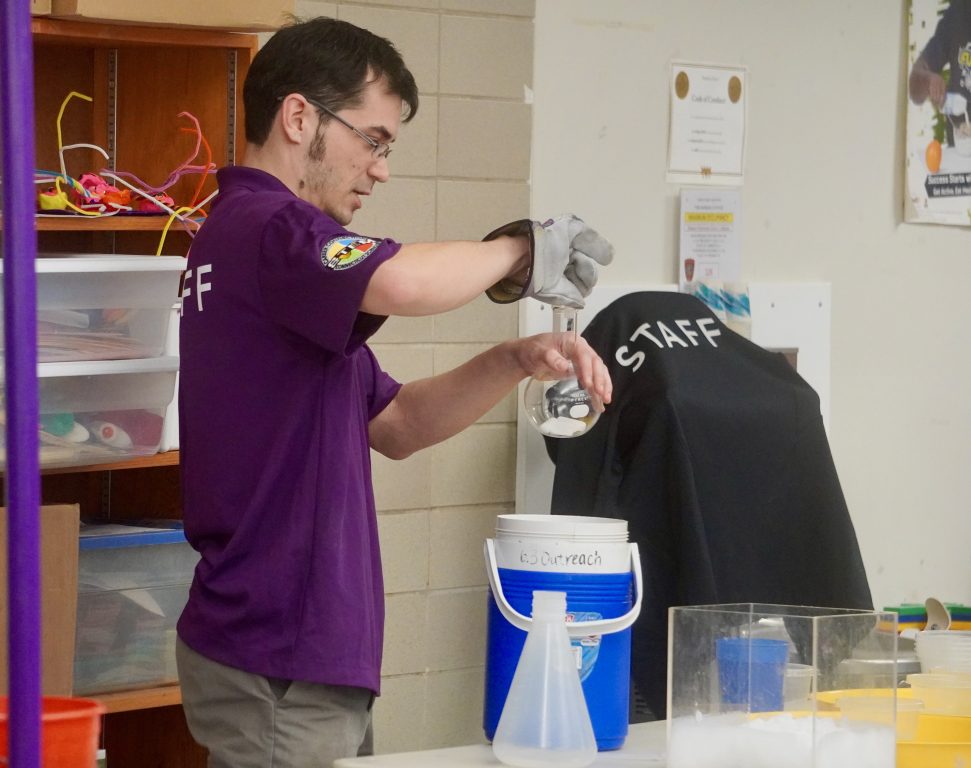
Wearing a thick glove, Mr. Nick of the Connecticut Science Center places dry ice in a beaker during the “Fostering Future Scientists” program, funded by a grant from the Foundation for West Hartford Public Schools. Photo credit: Ronni Newton
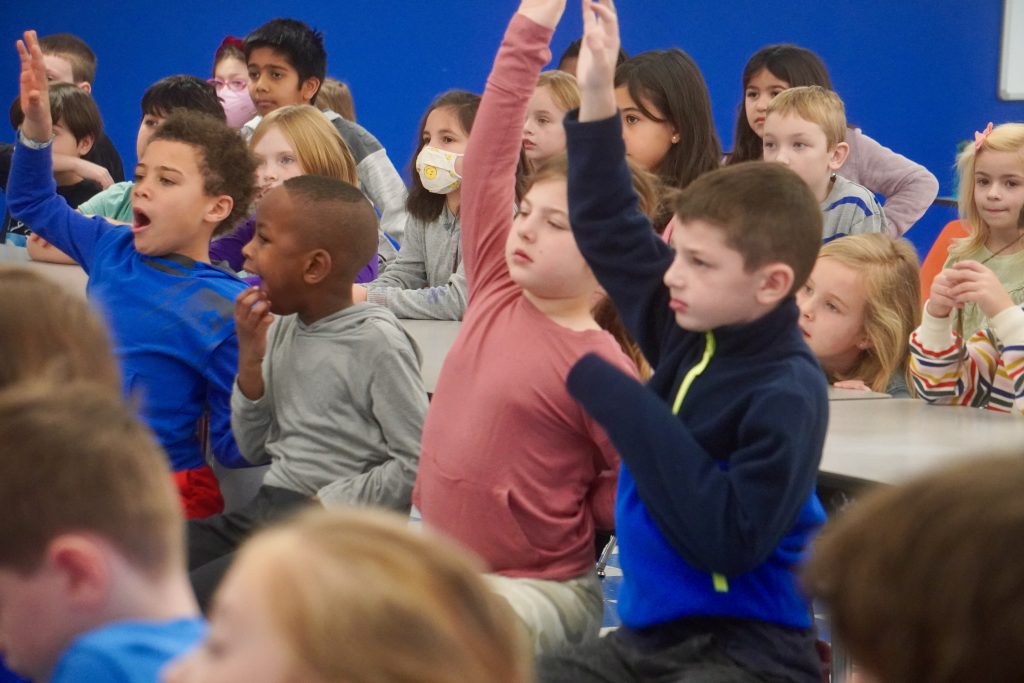
Braeburn first and second grade students eagerly answer questions and volunteer during the “Fostering Future Scientists” program, funded by a grant from the Foundation for West Hartford Public Schools. Photo credit: Ronni Newton
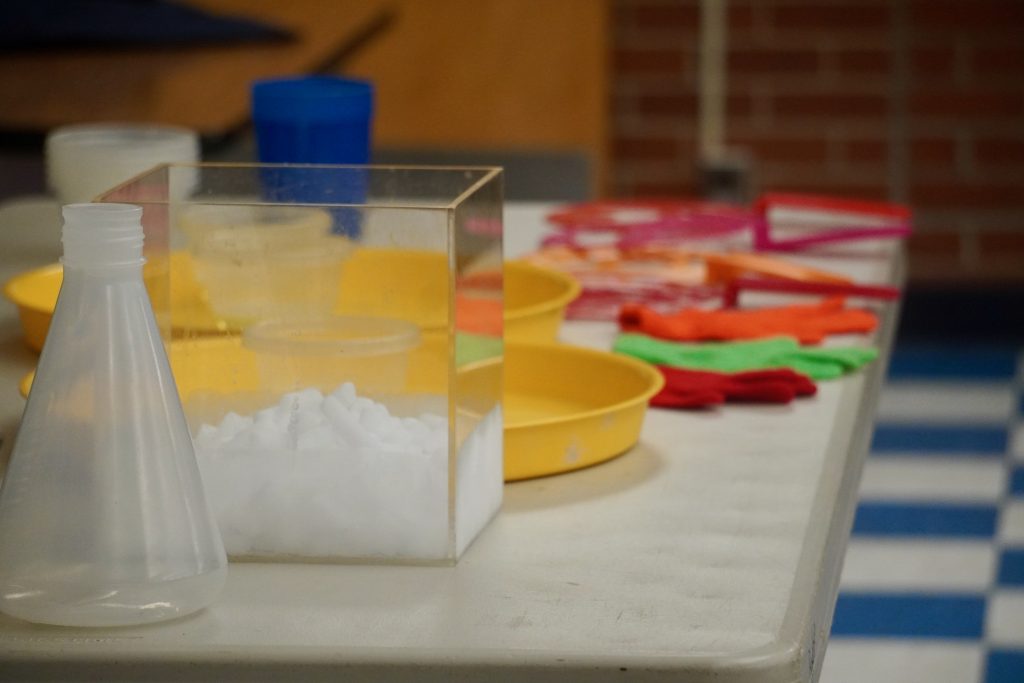
Some of the materials used during the “Fostering Future Scientists” program at Braeburn, funded by a grant from the Foundation for West Hartford Public Schools. Photo credit: Ronni Newton
Like what you see here? Click here to subscribe to We-Ha’s newsletter so you’ll always be in the know about what’s happening in West Hartford! Click the blue button below to become a supporter of We-Ha.com and our efforts to continue producing quality journalism.



